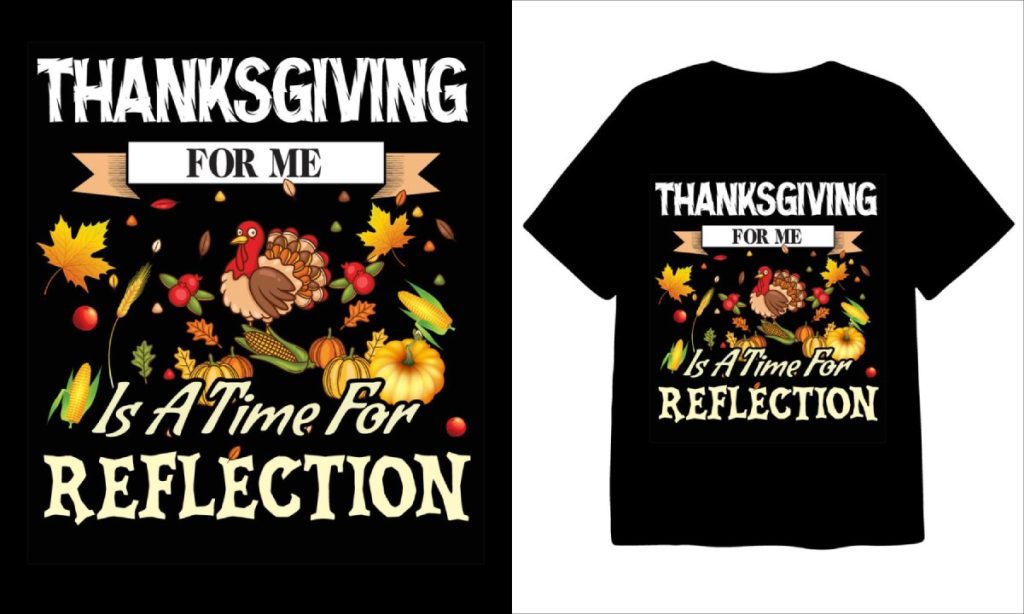DTF supplies are essential tools for anyone looking to unlock the full potential of Direct-to-Film printing. This innovative printing method has gained significant popularity due to its ability to create vibrant designs that transfer seamlessly onto various materials, including fabrics. To achieve the best results, obtaining the right DTF equipment is crucial, including a quality DTF printer, transfer film, and a reliable heat press machine. In this article, we provide an ultimate checklist of DTF supplies that would enhance your printing prowess. With the proper preparation, you’ll be well-equipped to take on any printing project with confidence.
In the world of fabric printing, essential materials such as Direct-to-Film (DTF) equipment play a pivotal role in achieving professional results. As digital printing technology evolves, methods like DTF continue to revolutionize the way we create stunning visuals on garments and promotional items. Whether you’re in need of specialized printing machines, transfer films, or heat application tools, understanding these vital components is key to success. This guide will walk you through a comprehensive checklist of must-have supplies for your DTF printing endeavors. By familiarizing yourself with these terms and tools, you’ll be positioned to excel in the dynamic realm of custom apparel printing.
Understanding the Importance of DTF Supplies
When diving into the world of Direct-to-Film (DTF) printing, having the right supplies is not just a preference but a necessity. DTF supplies directly influence the quality of prints and the overall efficiency of the printing process. These supplies encompass everything from the DTF printer itself to the specific inks, films, heat press machines, and accessories necessary for achieving high-quality transfers. A well-rounded understanding of each component enables printing professionals and hobbyists to create stunning designs with ease.
Additionally, the choice of DTF supplies can greatly affect the durability and vibrancy of prints on various fabrics. For instance, utilizing high-quality DTF transfer films and inks ensures that your designs maintain their color integrity over time, even after multiple washes. Thus, investing in superior DTF products can elevate the final output, giving customers and clients prints they can trust to last.
Selecting the Right DTF Printer
Choosing the appropriate DTF printer is one of the most crucial decisions in your DTF printing journey. The market offers various models tailored for this specific method, with brands like Epson leading the charge. A high-quality DTF printer not only influences the clarity and detail of the prints but also affects the overall speed of the printing process. By investing in a reliable printer, users can streamline their production, ensuring efficient operations and meeting tighter deadlines without compromising quality.
Moreover, selecting a printer that supports specific DTF inks is essential for achieving optimal results. Not everything in the printer realm works seamlessly with DTF technology; therefore, ensuring compatibility with your chosen inks will prevent potential failures during the printing or transfer stages. This attention to detail supports a smoother workflow and enhances print quality, thus creating a better end product.
Key Characteristics of DTF Transfer Film
The DTF transfer film plays a pivotal role in the DTF printing process. It is specially coated to allow for superior ink adherence and color vibrancy, which ultimately affects the final product’s quality. High-quality transfer films ensure that prints maintain sharpness and clarity, which are essential for detailed artwork and designs. The film serves as the medium through which the ink is applied and transferred onto the garment, making its quality paramount to achieving successful prints.
Choosing between matte and gloss finishes also impacts the visual outcome and performance of the prints. Matte films may offer a more subtle look, which many prefer for casual apparel, while gloss films can enhance vibrancy, making designs pop. Understanding your design needs and fabric compatibility will help you make the best choice in selecting the right DTF transfer film for your projects.
Maximizing Efficiency with Adhesive Powder
Adhesive powder is an essential component in the DTF printing process, acting as the binding agent that secures the printed design to the fabric. The application of the powder takes place post-printing and pre-heat transfer, ensuring that your design adheres securely when pressed. The right type of powder, particularly those formulated for lower temperatures, can greatly reduce the risk of damage to delicate fabrics while ensuring strong adhesion and a long-lasting print.
Using the correct adhesive powder not only aids in achieving crisp, clean transfers but also enhances the durability of the final product. This ensures that the designs remain intact through multiple washes and wear, much to the satisfaction of both producers and consumers. By incorporating effective adhesive powders in your DTF supply checklist, you can maximize efficiency and output quality, making your printing process more effective.
Choosing the Right Heat Press Machine
The heat press machine is another cornerstone in the DTF printing process, essential for transferring your designs from the film to the fabric accurately. Selecting a quality heat press with adjustable temperature settings and pressure controls allows you to tailor the transfer process for a wide variety of materials, ensuring optimal results every time. Brands like Hix and Geo Knight provide reliable machines that are widely recognized in the industry for their performance and durability.
Moreover, the design of the heat press can influence not only the durability of transfers but also the efficiency of the operation. A machine equipped with even heat distribution ensures that every part of the design is transferred uniformly, reducing the likelihood of underheated or overcooked prints. By investing in a high-quality heat press, you enhance not only the quality of your output but also the overall workflow efficiency of your DTF printing endeavors.
Best Practices for DTF Printing Success
Achieving success in DTF printing doesn’t merely rely on equipment and supplies; it involves adhering to best practices that can enhance the quality and efficiency of your prints. Regular maintenance of your DTF printer is essential to keep it in optimal working condition, as neglected machines can lead to clogs and inconsistent prints. Implementing a routine maintenance schedule, including cleaning print heads and performing test prints, can drastically improve both the longevity of your equipment and the quality of your output.
Conducting test prints before undertaking larger batches is another recommended best practice. This allows you to calibrate your settings and ensure that everything from color to pressure and temperature is just right. By fine-tuning your processes beforehand, you’re less likely to waste materials and time, leading to improved productivity and cost savings. Additionally, testing different fabrics will help you find the best combinations, further refining your approach and results.
Frequently Asked Questions
What are the essential DTF supplies needed for successful printing?
To achieve high-quality prints using Direct-to-Film (DTF) printing, you’ll need several essential supplies: a reliable DTF printer for optimal transfer quality, DTF-specific inks for vibrant colors, high-quality DTF transfer film, adhesive powder for better adhesion, a quality heat press machine for transferring designs, design software for creating and modifying images, and regular cleaning supplies to maintain your printer.
How does a heat press machine work in the DTF printing process?
In the DTF printing process, a heat press machine applies the necessary heat and pressure to transfer the design from the DTF transfer film onto the fabric. It’s crucial to choose a heat press that ensures even heat distribution and adjustable pressure settings to avoid damaging delicate materials, leading to high-quality transfers.
What makes DTF transfer film different from other printing supplies?
DTF transfer film is specifically designed for Direct-to-Film printing, featuring a special coating that allows ink to adhere properly during the transfer process. This film can come in both matte and gloss finishes, impacting print clarity and color vibrancy. Using high-quality DTF transfer film is essential for achieving sharp designs and long-lasting results on various fabrics.
Do I need special inks for DTF printing supplies?
Yes, DTF printing requires specific DTF inks formulated to provide excellent adhesion and vibrancy on fabrics. These inks differ from standard printer inks, ensuring durability and color fidelity in the final product. Brands like InkOwl and Sawgrass offer reliable DTF inks that can enhance your printing quality.
What should I consider when choosing a DTF printer?
When selecting a DTF printer, consider factors such as print quality, compatibility with DTF inks, and the ability to handle various media types. Look for printers that offer high-resolution output and are designed for the specific needs of DTF printing to ensure the best results for your printing projects.
How can I maintain my DTF printing supplies for optimal performance?
To maintain optimal performance of your DTF printing supplies, regularly clean your printer head to avoid clogs, conduct test prints to check calibration, and store your DTF inks and transfer films properly to prevent degradation. Additionally, ensure that your heat press machine is well-maintained to provide consistent heat and pressure during transfers.
| Key Points | Details |
|---|---|
| DTF Printing Overview | DTF (Direct-to-Film) printing transfers designs onto fabrics using heat and pressure, working well with various materials. |
| Essential Supplies | 1. DTF Printer – Specially designed for DTF printing. 2. DTF Inks – Formulated for vibrant, durable prints. 3. Transfer Film – Critical for print quality. 4. Adhesive Powder – Ensures designs adhere well to fabric. 5. Heat Press Machine – For even heat transfer. 6. Design Software – To create and modify prints. 7. Cleaning Supplies – For maintaining printer performance. |
| Best Practices | 1. Regular printer maintenance to enhance lifespan. 2. Conduct test prints before large batches. 3. Test fabric compatibility to ensure print quality. |
| Market Trends | Growth in DTF printing with innovations in sustainable practices, fabrics, and techniques. |
| Learning Resources | Utilize resources like the Printavo Blog, YouTube tutorials, and forums for community support. |
| Recent Developments | Increased social media sharing of DTF projects encourages creativity and innovation in designs. |
Summary
DTF supplies are essential for professionals looking to improve their printing capabilities and achieve quality results. The Direct-to-Film printing method is revolutionizing the way designs are applied to a variety of fabrics, ensuring vibrant colors and precision. By selecting high-quality printers, inks, films, and heat presses, alongside adhering to best practices, users are well-equipped to maximize their printing potential. As the DTF market continues to grow and evolve, staying informed about trends and utilizing available learning resources will further enhance one’s skills and expertise in this exciting printing realm.



